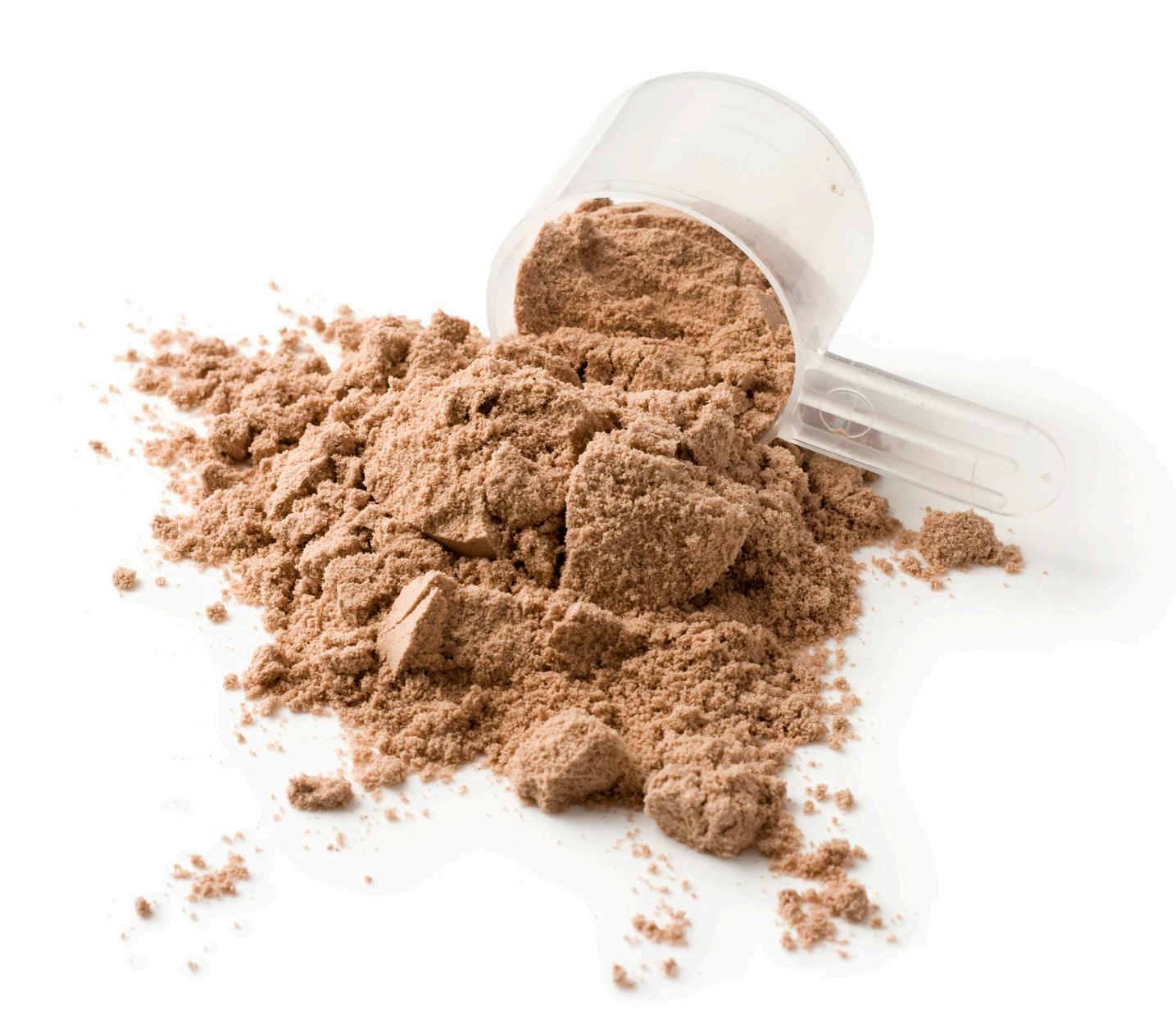
3 minute read
PICKING A PROTEIN POWDER
Picking a Protein Powder
Finding the right protein supplement for your goals
By Karen Kwan
Step into the protein powder section of a vitamin store and the vast wall of oversized containers is enough to make anyone new to using these supplements run home empty-handed. If you’re a protein powder beginner, you could ask friends what they use, but their goals and taste may differ from yours. Finding the one that will suit you doesn’t have to be overwhelming: start by paring it back to these key steps.
Consider if you can eat more whole foods to meet your goal “Before diving into using a protein powder, first make sure there are not other ways to meet requirements,” says Tara Postnikoff, a nutritionist based in Toronto. “Protein powders are still supplements – they aren’t a whole food.” She recommends looking at whether there are ways you can consume more real food for upping your protein. “When you’re eating whole foods, you get more nutrients and the other cofactors that aid the body. A supplement is not absorbed in its entirety in the same way food would be.”
Clarify what your goal is for using a protein powder Two of the most common reasons for taking a protein powder are to build muscle or to lose weight. Factor in any dietary restrictions, which will narrow down which supplements you can choose from. Keep in mind, though, notes Postnikoff, that incorporating a protein smoothie may not prove helpful if your goal is weight loss, as drinking calories doesn’t feel like you’re actually consuming them, so you might end up taking in more calories than you need. Plus, some brands contain a lot of sugar, which goes against your weight-loss goal.
Choose your type of protein The most common categories include whey and vegetarian/vegan sources. Whey is a dairy derivative – however, if you are lactose intolerant, it likely won’t affect you given that the supplement is whey protein and not sugar. Whey protein isolate is popular as it contains all of the essential amino acids and a high level of amino globulins (compounds that support the immune system), and it’s high in branched-chain amino acids (BCAA), which help with muscle protein synthesis, says Postnikoff. Whey is also highly bio-available, meaning that most of what you consume is absorbed by your body.
When looking at vegetarian and vegan sources (which include soy, pea and brown rice), she recommends that – as long as you don’t have an allergy – you use a supplement that is a blend of vegan sources, so you can ensure you’re getting the levels of essential amino acids you need. Also, look to fermented versions, as these types may help to improve the product’s digestibility.
When choosing between a whey or a plant-based source, “look at the complete picture,” says Postnikoff. “If you eat a lot of meat and dairy, this may be a way to diversify your diet by using a plant-based source, giving you a broader spectrum of nutrients.”
Check the grams of protein Read the labels to see how much protein each scoop delivers and calculate how many servings you’ll need to consume to meet your protein needs.
Read the ingredient list carefully A good starting point is to check that the ingredient list is on the short side, says Postnikoff, who also coaches and trains clients through her company Heal Nutrition. Avoid products that contain artificial sweeteners and sugars, “like aspartame, sucralose, Xylitol, anything with -ol and sucrose, maltose, dextrose – steer clear,” she says, adding that artificial colours and flavours should be on your no-go list as well. “Also, natural doesn’t mean healthy. Look for cocoa or actual chocolate, not just natural chocolate flavour, for example.”
Find your flavour Flavour is entirely a personal choice. Unflavoured, chocolate and vanilla are the most common. Think about how you will consume your protein powder. If you plan on blending it in a smoothie with fresh vegetables or fruit, Postnikoff suggests using unflavoured, given that you’ll have more choices of the foods you can throw into the blender with your protein powder.










